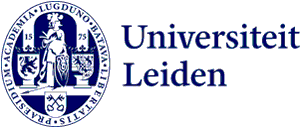
Investigating health equality in the past with a VIDI grant: ‘We will look for indications of stress’
Dr Sarah Schrader, an expert in the study of human remains, received a VIDI grant for a research project on health and inequality. In present day people with a high socio-economic status encounter fewer health risks than those in lower socio-economic strati. ‘Now we will look at this process in the past. When differences in socio-economic status emerged, did health inequality creep in at the same pace?’
Kushite culture
In order to study health inequality, Schrader needs access to a large amount of skeletal remains. Her main focus area will be the Kushite culture, known from ancient sources as the Nubians of southern Egypt and Sudan. ‘Kushite culture emerges around 2500 BC with the first indication of permanent settlements. We see a gradual shift to status differences until 1500 BC where we witness a stratified society featuring several signs of status differences, like grave goods and armies.’
To get a good picture of ancient Kushite society Schrader will explore skeletal remains in four different locations, ranging from the ancient capital to a small rural settlement. ‘My first aim is to see whether health inequality gets worse over time.’

Indications of stress
But how would you be able to discern something like overall health? ‘I will be looking for indications of stress. For example, I will be looking at levels of the stress hormone cortisol, that is embedded in hair. This is one of the reasons that Kush is a good place to do this study: preservation of human remains is really good.’ These cortisol levels will be indicative of the chronic stress levels experienced over the last years before death, and may therefore be indicative of health issues.
Other avenues of study will focus on migrants and grave goods. ‘We will identify migrants with isotope analysis, while investigating whether they are susceptible to health inequality. Lastly we will compare the presence of grave goods with the pre-death health situation of the individual in the grave.’
Excavations and community outreach
In the course of the project, Schrader estimates investigating 600 to 800 skeletal remains. Excavations will also be part of the investigation. ‘We will be excavating at Abu Fatima, a suburban site in Sudan, as well as three other locations.’ Within the project there is room for one PhD position. ‘But I am also going to employ a heritage specialist. Community outreach as part of this study is very important. We will be holding open days at the site, giving lectures at schools and football clubs, and organising a museum exhibition in the city of Kerma.’
